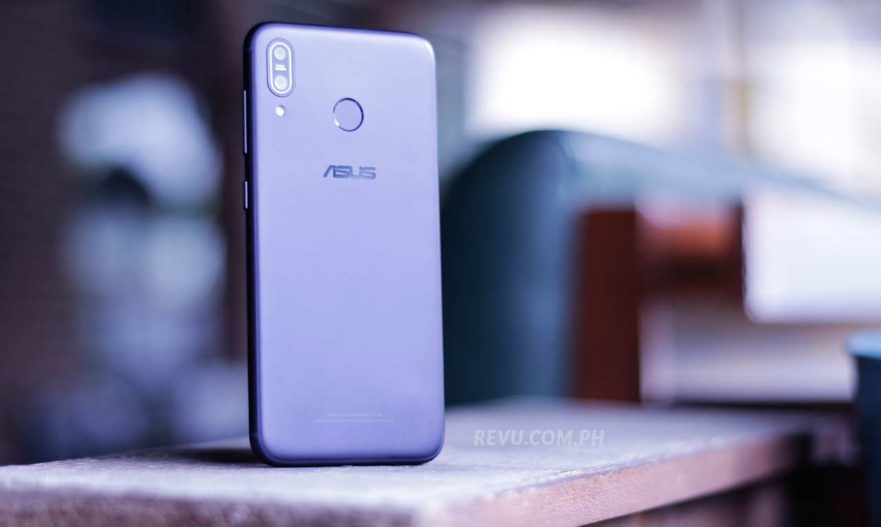Our hands-on review of the ASUS ZenFone Max (M1) might have given you a good idea of what to expect from this latest budget phone from the Taiwanese manufacturer.
Now that we’ve spent weeks with the ZenFone Max (M1) as our daily driver, we can finally get right down to talking about how it performs as a whole. Importantly, we’re going to look at battery life to determine whether or not ASUS’ “battery king” claim is accurate or indicative of real-world usage.
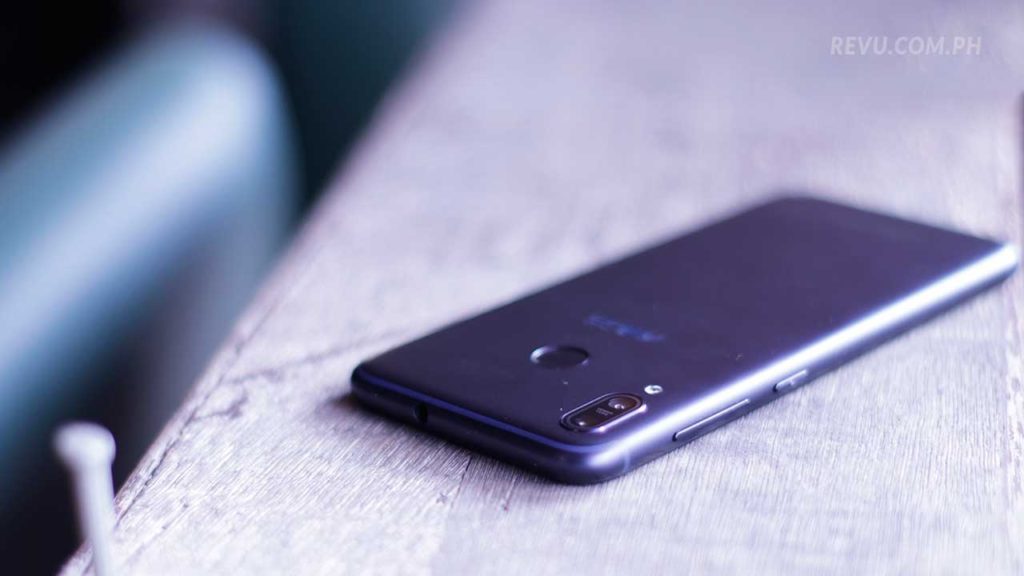
Should the ZenFone Max (M1), priced at P8,995 (around $172), really be a part of ASUS’ ‘battery king’ lineup?
Because, let’s be real — the very reason you’re here is to get an honest take on the phone’s mileage, which we will get to in a bit. If you missed our previous posts, the ASUS ZenFone Max (M1) is already out in the Philippines in black and gold color versions, and it’s on sale for P8,995 (around $172).
SEE ALSO: New ASUS ZenFone Max Pro M1 undercuts Xiaomi Redmi Note 5 Pro and ASUS ZenFone Max Pro M1 with pure Android coming to the Philippines — report
As we said before, one of the phone’s main attractions is that it’s approachable and compact, with ASUS marketing this 5.5-incher as something that has the footprint of a typical 5-inch handset. How ASUS was able to do this is due in large part to the size of the bezels around the display; they’re smaller and better integrated with the rest of the phone. The main body being made of matte plastic makes handling easier as well.

This 5.5-incher has the footprint of a typical 5-inch handset. How ASUS was able to do this is due in large part to the size of the bezels around the ZenFone Max (M1)’s display; they’re smaller and better integrated with the rest of the phone.
Another highlight for us is the curved design of the ASUS ZenFone Max (M1), which makes it such a pleasant device to hold and use for long periods. The front glass also adds curvature to the body, tapering toward the sides gently rather than changing the feel of the chassis abruptly.
There are zero buttons and no fingerprint hardware on the lower bezel, seeing as it’s on the rear panel. The round sensor is sized just right, and it’s located where your index finger would normally be. It’s also rather quick to unlock the phone, and misses are hard to come by.
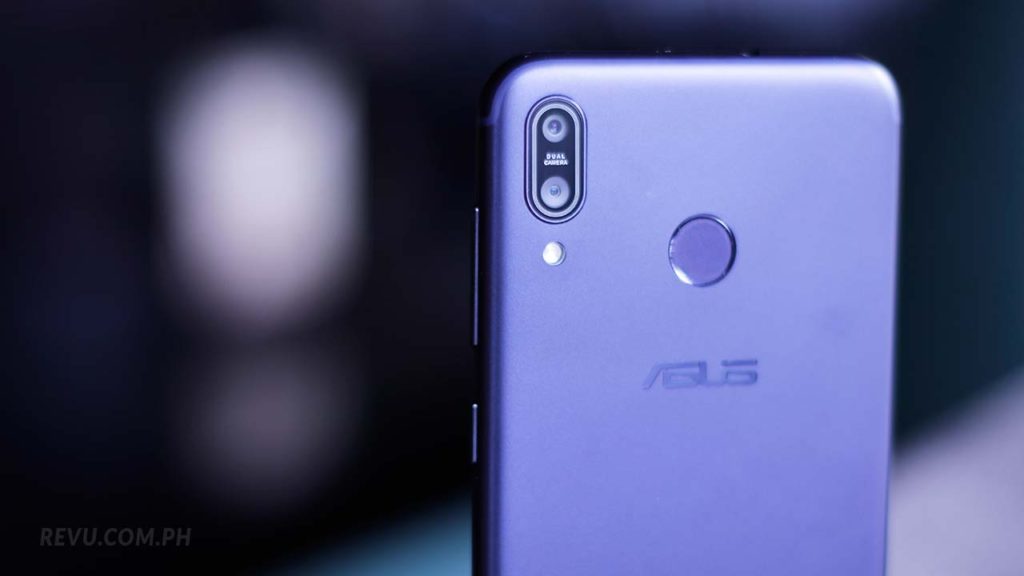
The ASUS ZenFone Max (M1)’s fingerprint sensor is sized just right, and it’s located where your index finger would normally be.
As with most newer phones, the ASUS ZenFone Max (M1) will allow you to use the front-facing camera to detect and identify your face, so that you can easily get to the home screen without ever touching the fingerprint scanner or putting in a PIN or password.
Face unlock, for one reason or another, doesn’t work as intended on our unit in spite of numerous attempts to re-register our face data in proper lighting. We’re not sure if our experience is an isolated one, and we could only hope that ASUS is already working to fix the issue in a future patch.
READ ALSO: ZenFone Live L1 is ASUS’ 1st Android Go phone
The mono speaker at the bottom, placed on the right-hand side of the phone, doesn’t get loud, but switching to Outdoor mode will boost the volume of the speaker at the expense of some clarity and detail. We don’t mind leaving it on when listening to music while working. Also, don’t be fooled by the speaker holes to the left of the microUSB connector; they don’t serve any functional purpose.
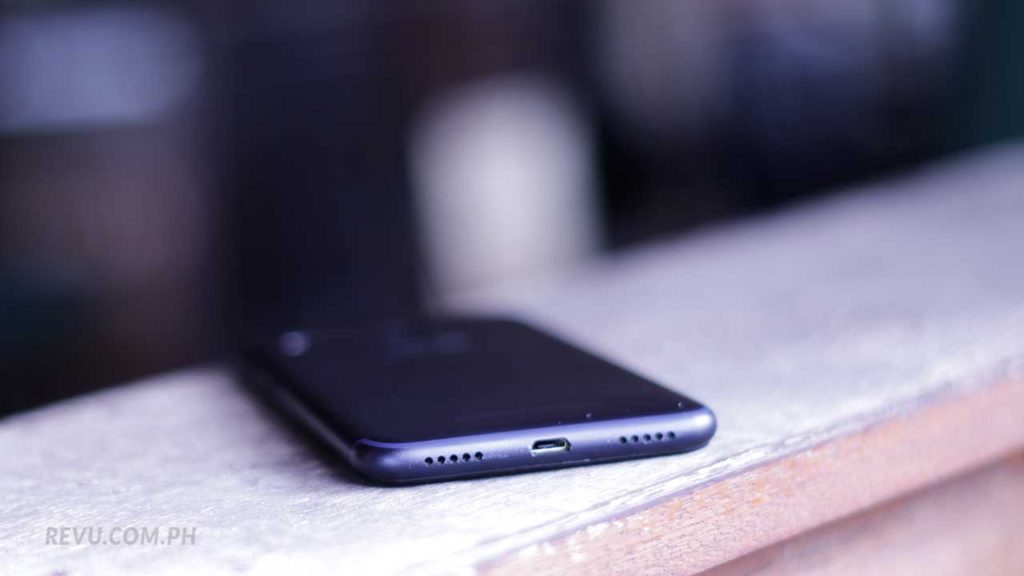
The mono speaker at the bottom of the ASUS ZenFone Max (M1) doesn’t get loud, but switching to Outdoor mode will boost the volume of the speaker.
The 5.5-inch LCD display looks decent, slightly on the cooler side of the spectrum, and can get bright enough for outdoor use. The viewing angles are okay, too, sufficiently wide that you can share the screen with someone else.
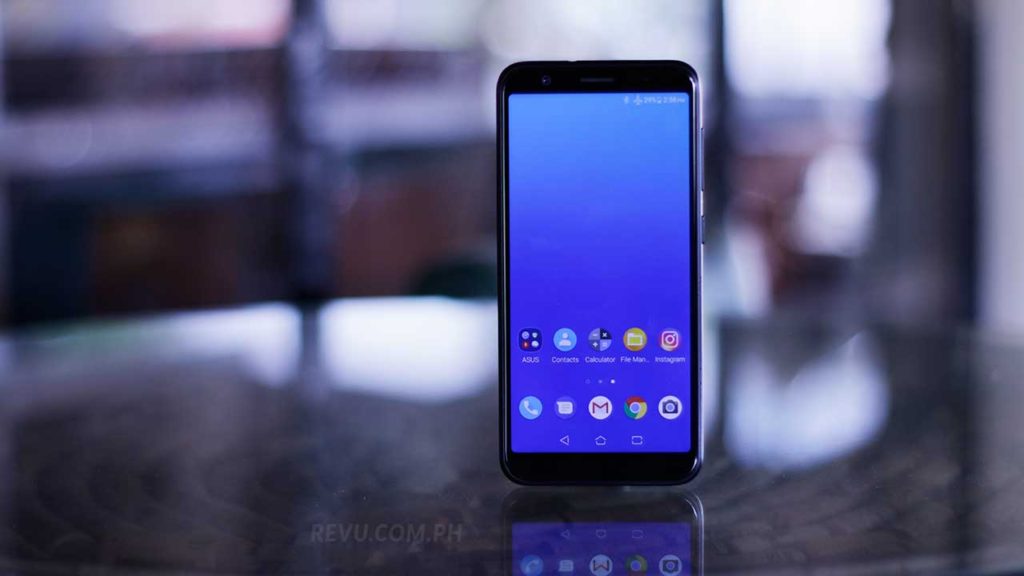
The ASUS ZenFone Max (M1)’s 5.5-inch LCD display looks decent, slightly on the cooler side of the spectrum, and can get bright enough for outdoor use.
To operate the phone, ASUS has incorporated software buttons along the bottom edge of the screen. If you wish, you can alter the button layout, although your only option is an inverted layout where the back and recent apps keys are interchanged. There’s also the option to change the behavior of the recent apps key, so with a long press of the button, the phone will take a screenshot or bring up two apps on the screen at once.
Camera
In keeping with the trend nowadays, ASUS has opted for dual cameras at the back of the ZenFone Max (M1). The setup includes a 13-megapixel system for framing regular shots and an 8-megapixel one with a 120-degree lens for those instances that require a much wider field of view. ASUS says the secondary camera boasts the focal length of 16.7mm in a 35mm film camera.
It goes without saying that the ASUS ZenFone Max (M1), unlike most dual-cam shooters out there, has a non-traditional system that isn’t specifically designed for portrait photography. You can still take pictures with some degree of background blur using both front and rear cameras, but the results typically straddle the line between acceptable and not-so-acceptable.
[sciba leftsrc=”https://www.revu.com.ph/wp-content/uploads/2018/05/ASUS-ZenFone-Max-M1-sample-photo-review-price-specs-Revu-Philippines-a7.jpg” leftlabel=”Auto” rightsrc=”https://www.revu.com.ph/wp-content/uploads/2018/05/ASUS-ZenFone-Max-M1-sample-photo-review-price-specs-Revu-Philippines-b7.jpg” rightlabel=”With bokeh effect” mode=”horizontal” width=””]Auto vs. Portrait (with bokeh effect)
Getting good shots in poor lighting will require time and effort, as the stock camera app doesn’t have too much to offer other than the basics. There are no manual controls built in. Still, we did enjoy taking wide-angle photos, and we found the fish-eye effect on the fringes to be tolerable.
[sciba leftsrc=”https://www.revu.com.ph/wp-content/uploads/2018/05/ASUS-ZenFone-Max-M1-sample-photo-review-price-specs-Revu-Philippines-a2.jpg” leftlabel=”Auto” rightsrc=”https://www.revu.com.ph/wp-content/uploads/2018/05/ASUS-ZenFone-Max-M1-sample-photo-review-price-specs-Revu-Philippines-w2.jpg” rightlabel=”Wide angle” mode=”horizontal” width=””]Sample photos taken with the ASUS ZenFone Max (M1): Auto vs. Wide angle
[sciba leftsrc=”https://www.revu.com.ph/wp-content/uploads/2018/05/ASUS-ZenFone-Max-M1-sample-photo-review-price-specs-Revu-Philippines-a1.jpg” leftlabel=”Auto” rightsrc=”https://www.revu.com.ph/wp-content/uploads/2018/05/ASUS-ZenFone-Max-M1-sample-photo-review-price-specs-Revu-Philippines-w1.jpg” rightlabel=”Wide angle” mode=”horizontal” width=””]Auto vs. Wide angle: More sample photos captured on the ASUS ZenFone Max (M1) from hereon
Auto vs. Wide angle
[sciba leftsrc=”https://www.revu.com.ph/wp-content/uploads/2018/05/ASUS-ZenFone-Max-M1-sample-photo-review-price-specs-Revu-Philippines-a4.jpg” leftlabel=”Auto” rightsrc=”https://www.revu.com.ph/wp-content/uploads/2018/05/ASUS-ZenFone-Max-M1-sample-photo-review-price-specs-Revu-Philippines-w4.jpg” rightlabel=”Wide angle” mode=”horizontal” width=””]Auto vs. Wide angle
[sciba leftsrc=”https://www.revu.com.ph/wp-content/uploads/2018/05/ASUS-ZenFone-Max-M1-sample-photo-review-price-specs-Revu-Philippines-a5.jpg” leftlabel=”Auto” rightsrc=”https://www.revu.com.ph/wp-content/uploads/2018/05/ASUS-ZenFone-Max-M1-sample-photo-review-price-specs-Revu-Philippines-w5.jpg” rightlabel=”Wide angle” mode=”horizontal” width=””]Auto vs. Wide angle
[sciba leftsrc=”https://www.revu.com.ph/wp-content/uploads/2018/05/ASUS-ZenFone-Max-M1-sample-photo-review-price-specs-Revu-Philippines-a6.jpg” leftlabel=”Auto” rightsrc=”https://www.revu.com.ph/wp-content/uploads/2018/05/ASUS-ZenFone-Max-M1-sample-photo-review-price-specs-Revu-Philippines-w6.jpg” rightlabel=”Wide angle” mode=”horizontal” width=””]Auto vs. Wide angle
For selfies, the ZenFone Max (M1) has been outfitted with a 13-megapixel camera with f/2.2 aperture and fill light for brighter faces in dark environments. Of course, Beauty mode is also available and makes for surprisingly balanced pictures in the Auto setting.
[sciba leftsrc=”https://www.revu.com.ph/wp-content/uploads/2018/05/ASUS-ZenFone-Max-M1-sample-selfie-photo-review-price-specs-Revu-Philippines-z9-1.jpg” leftlabel=”Auto” rightsrc=”https://www.revu.com.ph/wp-content/uploads/2018/05/ASUS-ZenFone-Max-M1-sample-selfie-photo-portrait-bokeh-review-price-specs-Revu-Philippines-z8.jpg” rightlabel=”With bokeh effect” mode=”horizontal” width=””]Sample selfies shot on the ASUS ZenFone Max (M1): Auto vs Portrait (bokeh effect)
Another set of sample selfies taken with the ASUS ZenFone Max (M1): Auto vs Portrait (bokeh effect)
Performance and battery life
On the inside, we know the ASUS ZenFone Max (M1) packs a Qualcomm Snapdragon 430 system-on-a-chip with eight CPU cores matched with 4GB RAM and 32GB storage, which can be further expanded up to an additional 256GB through a microSD card.
SEE ALSO: NBA 2K18 for Android and iOS: Can your phone run it?
As we noted before, this combination is neither over the top nor underwhelming. It is enough to keep multiple apps in the background, though, and it can result in good gaming experiences when playing heavier titles such NBA 2K18 for Android. From a technical standpoint, the popular basketball game runs at medium detail without issues. In case you missed it, our unit scored 56,948 points on the Antutu Benchmark app.
NBA 2K18 on the ASUS ZenFone Max (M1)
Interacting with ASUS’ proprietary user interface on top of Android 8.0 Oreo proved to be nice mix of customization, convenience, and Android the way Google wants it to be experienced. The updated overlay is responsive, and apps load fairly quickly. It’s all you can ask for from a bargain option.
Finally, there’s the battery life, which is one of the hallmarks of this particular model. The 4,000mAh battery within its plastic shell offers less capacity than the massive 5,000mAh unit ASUS was able to fit inside last year’s ZenFone 4 Max. And while that’s admittedly somewhat discouraging to hear, we found the current Max iteration can last a full day on a single charge, with a bit of power left at the end.
The ASUS ZenFone Max (M1) can last a full day on a single charge, with a bit of power left at the end. You can, of course, use the phone sparingly (switching to Power Saving or Super Saving mode also helps) and get two days of use.
You can, of course, use the phone sparingly (switching to Power Saving or Super Saving mode also helps) and get two days of use. Charging the phone from zero to full takes upwards of three hours — a long wait for something supposedly capable of “fast charging” — at least in our experience.
The PCMark Work 2.0 battery test reported 12 hours and 23 minutes in our last run. That’s good but expected news given what’s under the hood. Besides firing up the PCMark benchmark app, we’ve run a few practical tests as well to get an idea how the ASUS ZenFone Max (M1) handles heavier gaming loads.
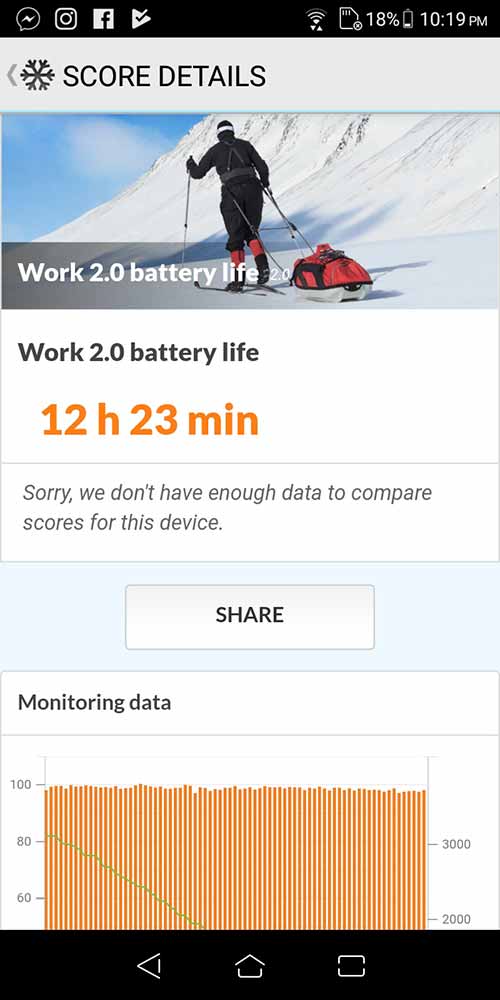
The PCMark Work 2.0 battery test reported 12 hours and 23 minutes in our last run of the ASUS ZenFone Max (M1).
We played NBA 2K18 for two straight hours at medium graphics settings and saw roughly a 40-percent drop in battery reading. The result is fair and understandable. However, also keep in mind that lowering the graphics can drastically reduce power drain, and thus allow you to play longer away from a socket.
Final thoughts
The ASUS ZenFone Max (M1) is one of the most well-rounded budget smartphones on offer right now. Design-wise, it’s convenient to use. The display is just the right size; sharp enough at 1,440 x 720 pixel resolution; and tall that content looks better than on a regular LCD screen with a 16:9 picture format.
The wide-angle camera is a unique differentiating feature for an otherwise okay system, while the Snapdragon 430 and 4,000mAh battery inside perform up to expectations.
This phone doesn’t break new ground in its territory — but it’s nonetheless a solid and complete effort that won’t disappoint.
ASUS ZenFone Max (M1) specs
- 5.5-inch LCD display, 1,440 x 720 resolution (18:9)
- Octa-core Qualcomm Snapdragon 430 processor
- 3GB RAM
- 32GB expandable storage
- Dual 13-megapixel and 8-megapixel rear camera with LED flash
- 13-megapixel front camera
- 4,000mAh battery
- Android 8.0 Oreo
Share this Post


